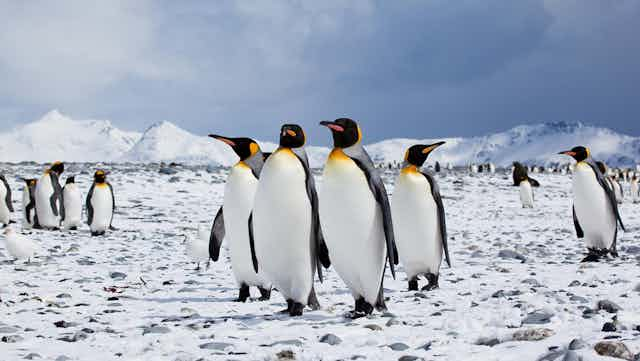In the lead up to the release next month of the Intergovernmental Panel on Climate Change’s (IPCC’s) Fifth Assessment Report we are exploring concepts of confidence and certainty in climate science – beginning with this, the first of four articles.
Penguins can’t fly and a skydiving climate scientist always falls to the ground. In all our minds these are both statements of fact and there is nothing unclear or uncertain about them.
If someone asked, “Why are these facts so?” we would have no difficulty explaining them. It is obvious that penguins cannot fly. They cannot generate enough lift to support their weight. Similarly, of course a climate scientist is going to hurtle toward the ground when jumping out of a plane. It’s called gravity!
We can readily provide explanations of these facts and in our minds they are both certain. Any suggestion that these facts are uncertain, to any degree, would probably get us some very strange looks.
So what about climate change? Why is “certainty” applicable for some scientific theories, such as gravity, but not for other theories such as those that describe a human influence on the climate?
Gravity and the link between anthropogenic carbon dioxide emissions and increasing global temperatures actually have a similarly strong consensus of scientific evidence. Furthermore, science works the same way whether it’s investigating gravity, flying penguins or climate change.
Scientists build theories by gathering and scrutinising multiple lines of evidence, with each new piece of evidence forming part of a bigger puzzle. When enough pieces of the puzzle have been assembled and we can understand the puzzle as a consistent whole, we have developed a scientific theory.
Evidence underpins all scientific theories and guides our understanding on the way our world works. The more evidence we collect, the more consistent, or sometimes inconsistent, our puzzle becomes. It is only with strongly consistent evidence, and very little inconsistent evidence, that a scientific theory is accepted.
A scientific theory is not developed from someone’s hunch. It describes a coherent, evidence-based system of ideas that have been rigorously investigated. But that does not mean that there are zero inconsistencies in the evidence defending a scientific theory.
Let’s hypothesise that you can catch a ball. Scientists would build a body of evidence by throwing you a ball thousands of times. You will probably catch that ball most of the time but there is likely to be the odd occasion when you will not. Those occasions, those inconsistencies, do not disprove that you can catch a ball.
As scientists continue to make observations and the body of evidence becomes more and more consistent, the confidence in a scientific theory increases. But in science, absolute 100% certainty is never obtainable because we can never have an infinitely large body of evidence. The best science can do is to provide virtual certainty by weighing up the consistency using a large amount of evidence.
As with any scientific theory, maybe human-caused climate change is not happening. But then again, maybe penguins are just choosing not to fly because they are afraid of heights.

